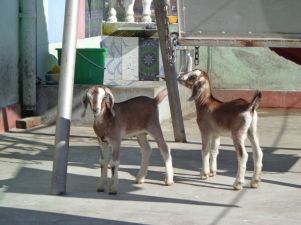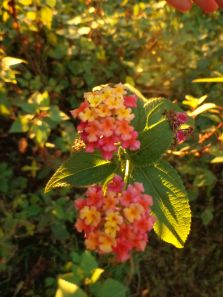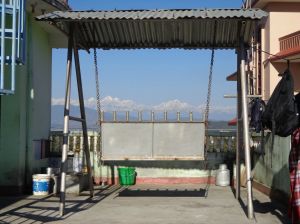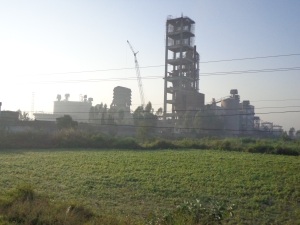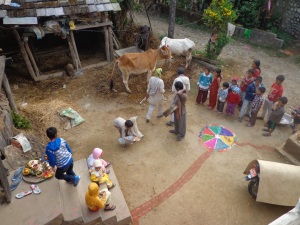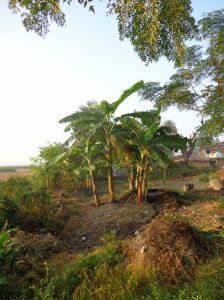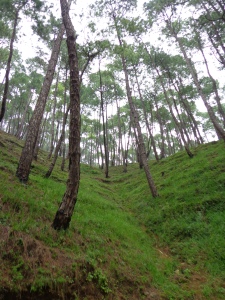Continuing from my last post about India, I would like to focus this piece on another of my favourite destinations and some thoughts on what it was like to travel alone, and why travelling through India was a particularly important experience to have.
Last time I described the incredible beauty of human civilization in the city of Mysore, but the next stop in my travels and this story brings us to the south western coast of India, around the town of Kasaragod in the state of Kerala. From all who I disclosed my travel route to prior to arriving I received the same description. In reference to its natural beauty and prevailing human devotion this area was called ‘God’s country,’ and once I arrived I could not help but agree. Once I got to Kasaragod I was overwhelmed by the heat, and found the first place I could to escape the sun and grab some lunch. This was where I gained my first impressions of the people in Kerala, and realized I was not going to find many who spoke English, but despite the language barrier everyone seemed very humble and helpful. After lunch I caught the local bus south to an area known to outsiders exclusively for having the largest fort in Kerala, but in no time I became the only occupant at the local hotel and proceeded to discover what else made this place so special.
The surrounding area was filled with small fishing villages and every so often along the main road a small town where you could find some local eats. Although the few stores had most modern goods I noticed that they still lacked one piece of modernity we like to take for granted – the internet! This however gave the area a more isolated feel, and combined with its natural beauty, it really felt untouched and unexploited like other areas built up with fancy resorts and crowded with tourists. Meeting people of all ages was a pleasant experience, even if only exchanging the characteristic head wobble and a smile, but those who had some knowledge of English were more than happy to practice. Considering it was first experience with the local language called Malayalam I had very little time to attempt to learn anything substantial, so even I was happy when someone was able to tell me a bit about themselves, their life, or show some interest in my own.
My best story comes from my first afternoon on the beach. After taking a swim I decided to walk along the beach toward the fort, which took me through a little fishing village where I discovered the sea was also the local dump and washroom. Feeling slightly phased that I had just swam in the water not too far down the coast I continued along, meeting one villager who I had just witnessed go to the toilet at the seaside. Along with his big smile he held his hand out to welcome me to his village. My initial feeling of mild disgust disappeared once it clicked that he was holding out his right hand, while it was the left that was reserved for finishing one’s business. By the time I reached the south face of the fort the sun had all but drained my energy and I welcomed the invitation by some local high school guys to join them under the nearest tree.
Although everyone was super friendly only two of them could speak to me in broken English. Through them I learned how they were all friends, and while sitting with them I enjoyed witnessing how close friendships really are in India. This group seemed to do enjoy doing everything together including smoking the ganga they told me they buy from the same fishing village I had just passed through. As they proceeded to role and smoke a few joints I learned about their tastes in music, which didn’t fail to include pop titles from the western charts. Even within such an isolated community, among the youth especially, there was still no escape from outside cultural influence. However, they were very much still stuck in their own world, with hardly any knowledge of English, or even the national language of India – Hindi – they retained and expressed a great deal of their own culture.
Where the story gets interesting is about the time men started bolting from the palms beyond the beach where my newfound friends had previously pointed to when I asked where they had bought the weed from. Before long there were police officers chasing these men along the beach and carrying plants and tarps out of the trees. As isolated of a place I thought it was, there still existed the rule of law, and the police clearly did not have a problem enforcing it. All this excitement shortly scared off the group of guys and after waiting to watch the outcome of the police raid I too headed into the palm trees seeking shade and someone selling coconut water to quench my thirst.

The old fort was named after the nearby town of Bekal and provided an awesome morning walk and view of the surrounding landscape. The southern and western walls towered over the sea, where the morning fishermen slowly made their way along the coast and the occasional dolphin could be seen surfacing. The endless white sand of the beach on both sides of the fort divided the Arabian Sea from the sea of coconut palms that stretched inland for as far as the eye could see. The occasional radio tower or mosque spire was all that extended beyond this canopy of green. This place surely was paradise, and its relative remoteness has kept its natural and cultural beauty in its purest form.
My last week in India brought me to Jaipur in Rajasthan, Agra in Uttar Pradesh, and the Indian capital of New Delhi. These places are all in the north of India, which itself has a very different culture, and offers a different experience to the Indian backpacker. Whether it was that my heart was still in Kerala or I was getting slightly tired and homesick this point in my travels, I was happy to be on the last leg of my journey. These cities had amazing historical places to explore and I made sure to find some of the best north Indian food, while meeting more of the locals along the way. A contrasting feeling for me was my frustration with being constantly bothered to see, touch, taste, or smell; and the uplifting feeling of striking up an engaging conversation with someone who wants nothing more than to speak and listen.
When travelling alone I felt I had more opportunity to converse with people because I was never occupied with a companion. While this did mean some moments were more boring or lonely, it gave an incentive to meet the locals and more often be engaged by other people. To travel alone was also like having no burden (other than my backpack), and being no burden. I could go at my own pace and by any change of plan. This usually meant I was out of the hotel in the early morning and wandering the city for most of day. I had broadly researched where to go and what to see, but it was often more of an adventure to set off toward one destination taking the long way, only to find the journey there was most exciting. For any future endeavor I would most likely drag someone along with me, but I’m glad I got to experience backpacking by myself, especially through a country that fascinates me so much.
There is a certain attraction to India because of the extent of opportunity, transformation, diversity, unity, crowdedness, and scarcity. In the grand picture it seems like a hot pot of growth and progress, but it is the existence of such strong belief structures that makes each individual interesting. Family, God, and state are powerful concepts in India, even within such a diverse environment. The Indian family and friend structure provide models for something those of us in the west could learn from and appreciate. The ideas of God and religion remain a prominent part of thought and action in society. And the autonomy and identity of state has reigned supreme in the federal system within India. The diverse collection of political identities is a result of the strength of the state and distinct regional languages, cultures, and more.
For those reading back in Canada, if you thought we have the model multicultural nation, you have yet to understand how countries such as India can stay united. It is a wonder how so many cultures, religions, languages, and histories can come together under one flag. Travelling through the south of India I encountered three official state languages – Tamil, Kannada, and Malayalam – each completely different from the national language of India and spoken by populations equal or greater to that of Canada. I’m happy to have had the opportunity to discover these differences and feel a bit more ‘worldly’ in the process. The world is full of fascinating people, each with a unique story, and only when you can meet these people and hear their stories can you fully understand their own context and perceptions. Everyone should take a chance and discover a new country and its people, and regardless of your experience, I guarantee you will come home a little humbler and understanding of the differences or similarities between yourself and others in this world.
















